Sustainable packaging: A comparative study on thermoplastic whey protein films with biodegradable plasticizers
Vol. 18., No.6., Pages 592-606, 2024
DOI: 10.3144/expresspolymlett.2024.44
DOI: 10.3144/expresspolymlett.2024.44
GRAPHICAL ABSTRACT
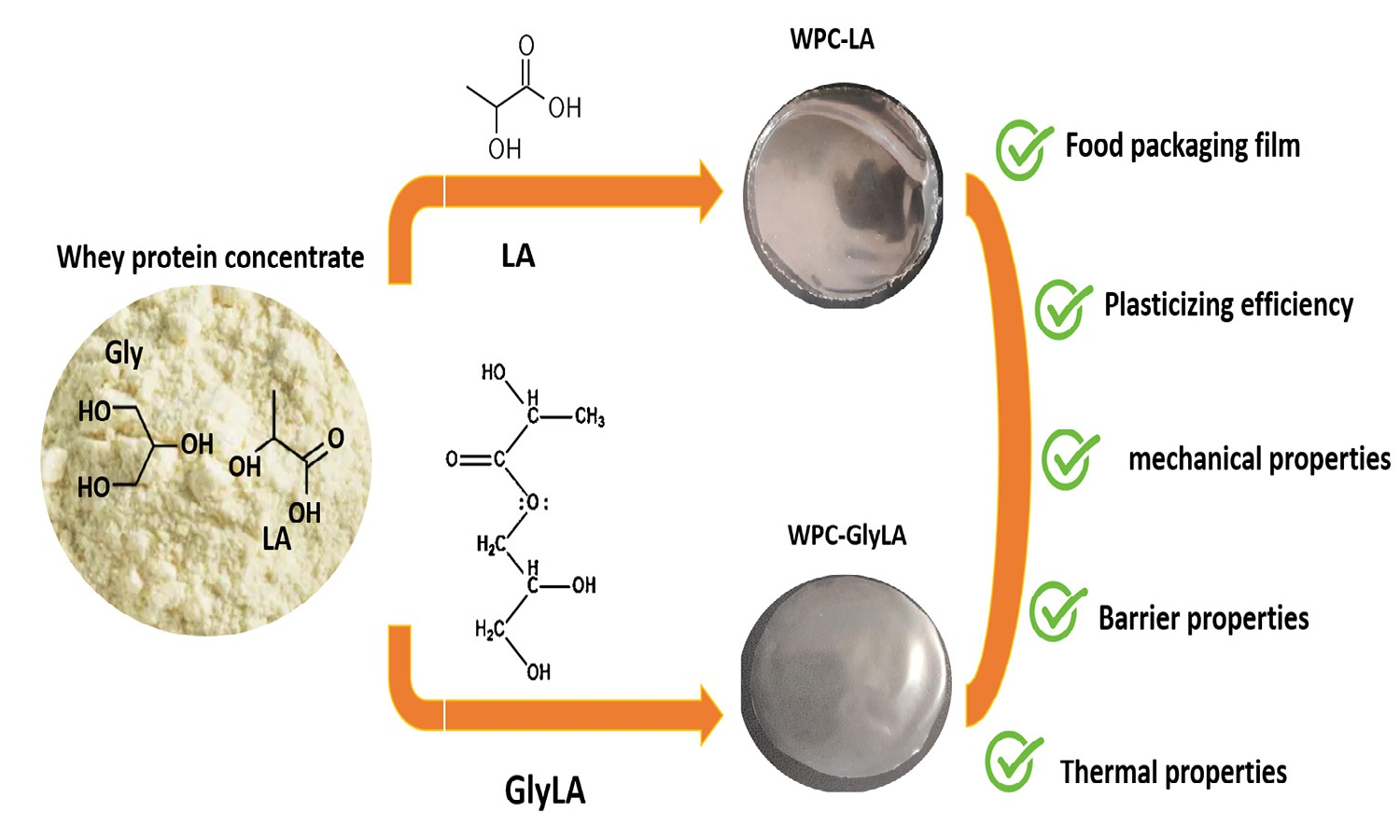
ABSTRACT
Glyceryl lactate (GlyLA) was synthesized through the esterification of glycerol (Gly) and lactic acid (LA) to plasticize whey protein concentrate (WPC) films with three different ratios of WPC to plasticizer (85, 90, and 100% w/w). LA was also introduced as a new plasticizer of whey protein films and compared in similar contents. Gly-plasticized films were also used as control groups. The synthesized GlyLA, including compatible esterification degree with WPC, was characterized by Fourier transform infrared Spectroscopy (FTIR) and hydrogen nuclear magnetic resonance spectroscopy (H-NMR) analyses. Then, the plasticizing effect of different types of plasticizers on the optical, thermal, mechanical, and water resistivity properties of the prepared films was evaluated. FTIR in attenuated total reflectance (ATR), Differential Scanning Calorimetry (DSC), tensile measurements, and cup method were also employed to examine the molecular structure, transition temperatures, mechanical resistivity, and water vapor permeability (WVP) of the modified films. The results showed a lower glasstransition temperature (Tg) and better ductility. By Increasing plasticizer content, solubility and WVP were increased in all groups. Furthermore, WPC-based films plasticized with 80 or 90% w/w of LA and GlyLA exhibited not only higher tensile strength and flexibility but also remarkably lower WVP than Gly plasticized films, turning them into potential alternatives for application as food packaging.
RELATED ARTICLES
Katalin Litauszki, Tamás Tábi, László Mészáros
Vol. 19., No.5., Pages 455-456, 2025
DOI: 10.3144/expresspolymlett.2025.33
Vol. 19., No.5., Pages 455-456, 2025
DOI: 10.3144/expresspolymlett.2025.33
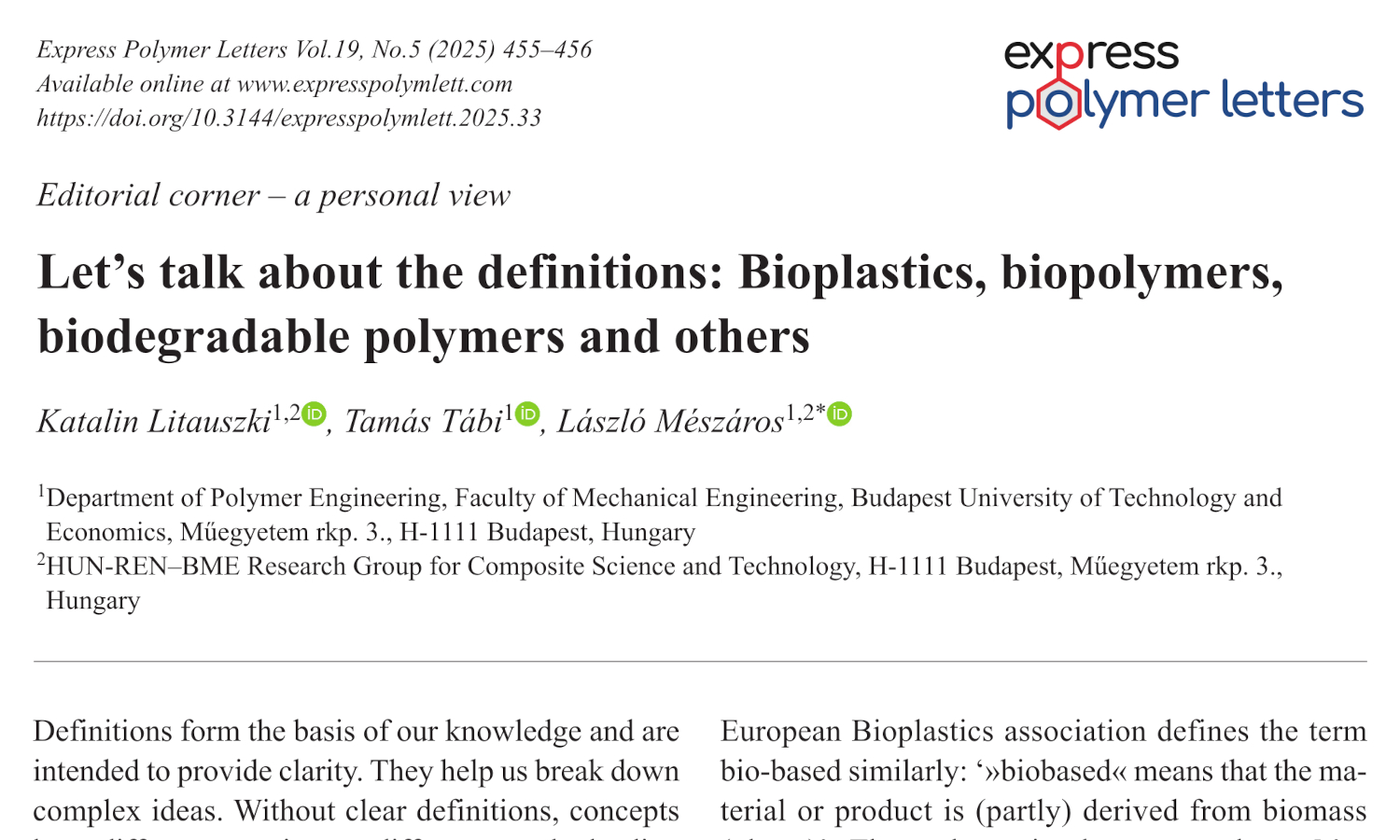
This is an editorial article. It has no abstract.
Konrad Stefaniak, Anna Masek
Vol. 19., No.4., Pages 386-408, 2025
DOI: 10.3144/expresspolymlett.2025.29
Vol. 19., No.4., Pages 386-408, 2025
DOI: 10.3144/expresspolymlett.2025.29
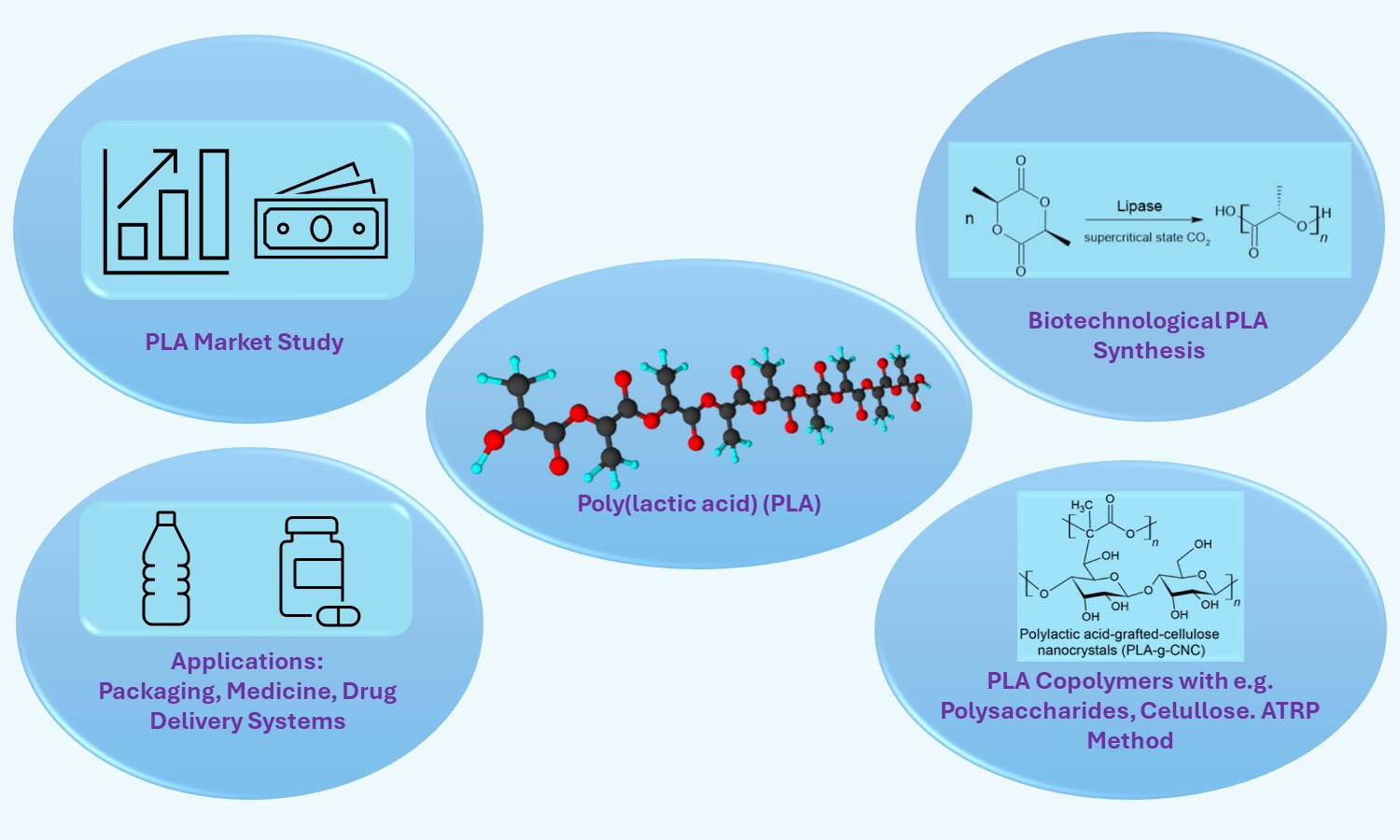
This review is focused on recent achievements in poly(lactic acid) (PLA) synthesis and copolymerization with special regard to biotechnological routes of PLA synthesis, which use bacteria/enzymes (e.g., enzymatic ring opening polymerization (eROP)). Besides PLA, also lactic acid (LA) synthesis is described and an emphasis is put on the biotechnological methods. Having regard to PLA copolymerization, this paper attempts to describe different types of PLA copolymers (such as block copolymers, PLA copolymers with polysaccharides, PLA-cellulose copolymer composites, and PLA polymer brushes). A detailed overview of the recent accomplishments in the field of PLA copolymers is presented. Various enhanced properties and applications of presented PLA copolymers are discussed. The attention is placed mainly on applications in the field of tissue engineering, drug delivery systems, and the packaging sector. Furthermore, a PLA market study and its economic forecast are presented. Eventually possible directions for future research in the field of PLA synthesis and copolymerization are indicated.
Mohammad Mehdi Alighanbari, Firoozeh Danafar, Araam Namjoo, Asma Saeed
Vol. 19., No.1., Pages 15-46, 2025
DOI: 10.3144/expresspolymlett.2025.3
Vol. 19., No.1., Pages 15-46, 2025
DOI: 10.3144/expresspolymlett.2025.3
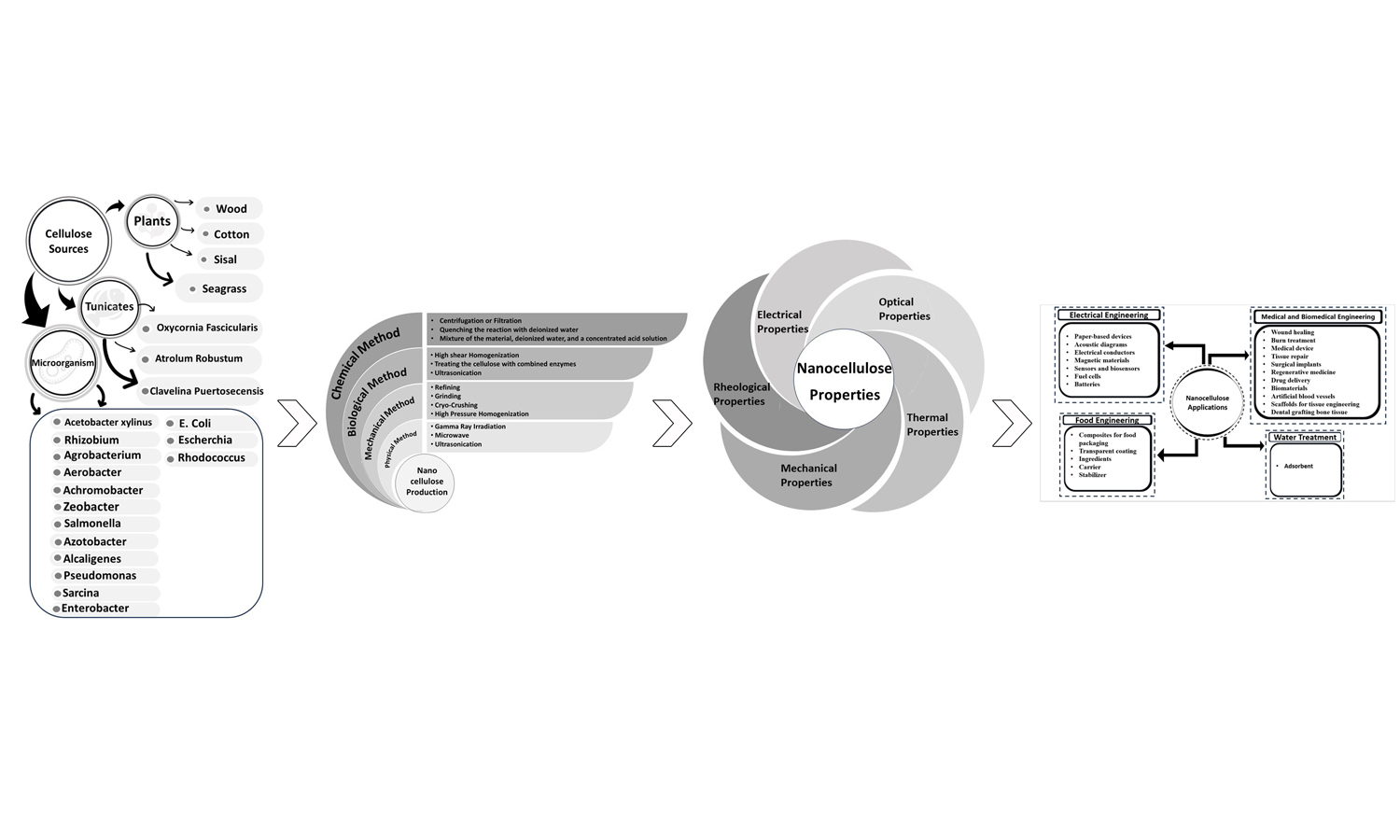
The environmental and ecological concerns drive researchers to synthesize functional materials using components from natural resources. Nanocellulose (NC), derived from plants, marine animals, or microorganisms, is a green material attracting attention due to its abundance, biocompatibility, and biodegradability. NC’s interstice properties enable the synthesis of functional nanocomposites in forms like aerogels, foams, paper, sheets, or hollow filaments. This review briefly describes NC classification and production while comprehensively presenting its mechanical, rheological, optical, and electrical properties, offering foundational knowledge for future research. Additionally, it highlights recent developments in NC-based products across fields such as papermaking, water treatment, civil engineering, electronics, cosmetics, food, and medicine. For the first time, this paper explores recent advances in NC molecular simulation, providing insights into structure, arrangement, and interactions through molecular dynamic simulation. Finally, future prospects for NC-based applications are discussed to encourage studies addressing current challenges.
Viktor Konstantin Dragan, Noémi Petrovics, Csaba Kirchkeszner, Tamás Tábi, Bálint Sámuel Szabó, Zsuzsanna Eke
Vol. 18., No.4., Pages 391-405, 2024
DOI: 10.3144/expresspolymlett.2024.29
Vol. 18., No.4., Pages 391-405, 2024
DOI: 10.3144/expresspolymlett.2024.29
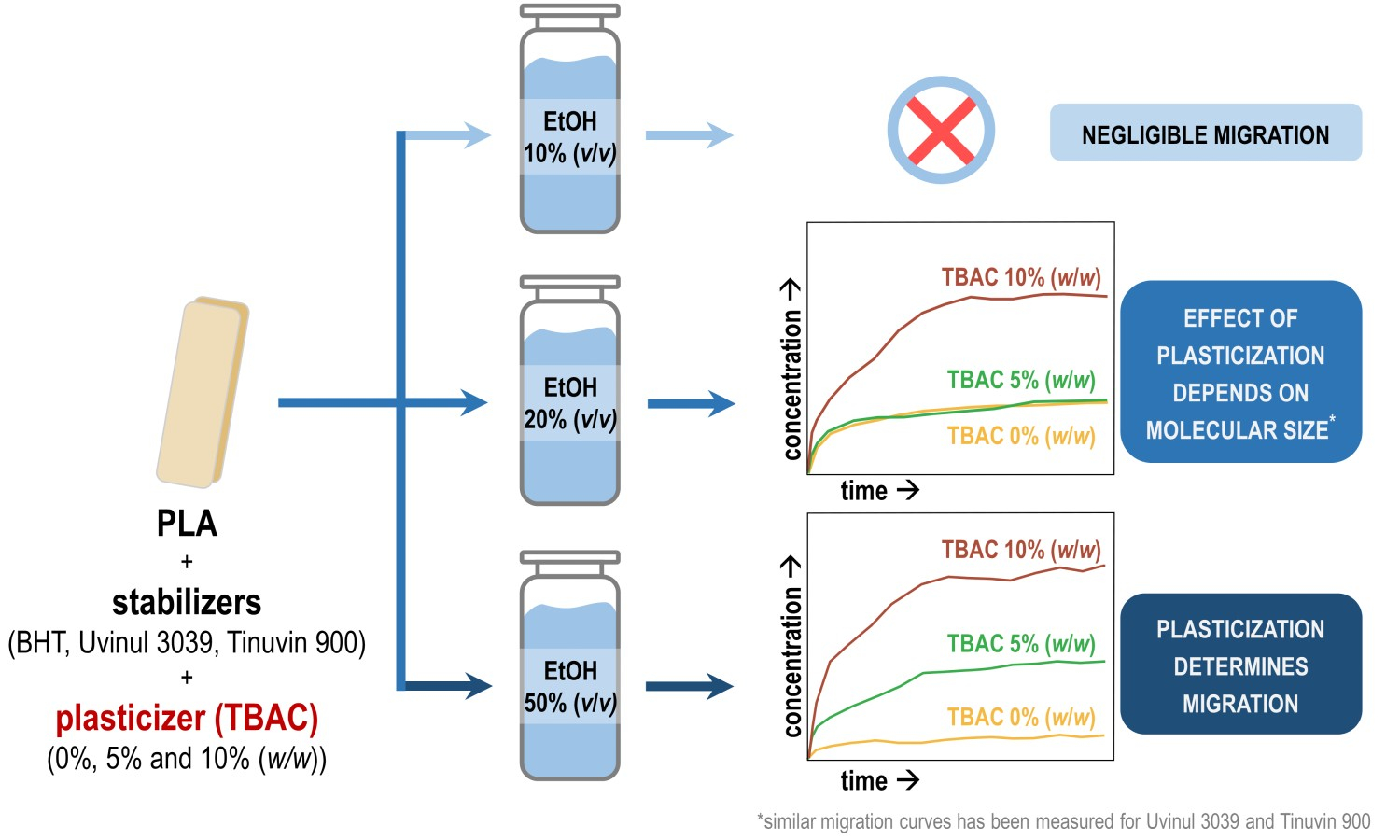
The
effect of swelling and plasticizer content of a plastic, as well as the ethanol
content of the food simulant on the migration kinetics of three stabilizer-type
additives from polylactic acid (PLA)-based food contact plastics has been
investigated. The results proved that the parameters that affect the diffusion
of substances inside the polymer matrix, i.e.,
swelling, plasticization, and the size of migrants, are the decisive factors in
the migration from PLA to ethanolic food simulants. Both swelling and migration
were negligible when ethanol 10% (v/v) was used. Contrarily, the specific
migration limits of Commission Regulation (European Union, EU) No. 10/2011 were
exceeded in ethanol 50% (v/v) for all investigated stabilizers. Migration was
promoted by plasticization, but this effect could only be observed when the
applied food simulant swelled the plastic (at least 20% (v/v) ethanol content).
The dependence of the plasticizer’s migration-enhancing effect on the swelling
has not been shown before. When the plasticization caused increased migration,
it also led to specific migration limit exceeding within a shorter period of
time. It happens even if PLA-based plastics are dedicated to the storage of
hydrophilic food, which is the most common application area of these products.
These results can support the improvement of both consumer safety and active
packaging development.




